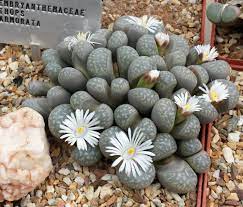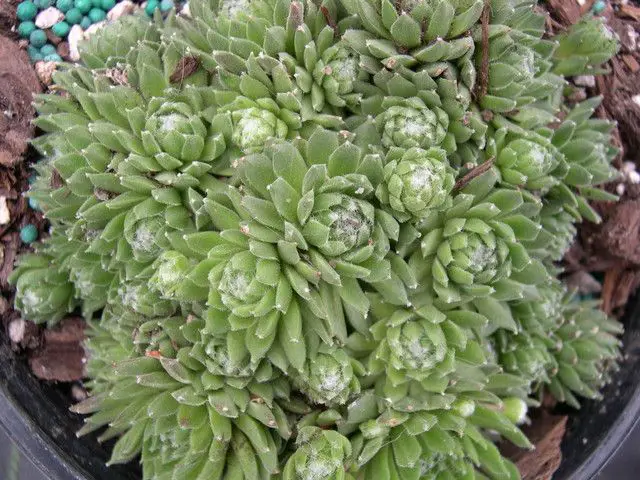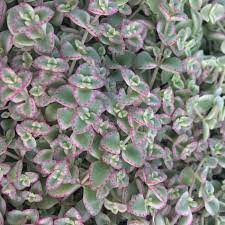Succulents are an all-time favourite of many people, some people like big succulents, while others have a fancy for succulents that stay small. Succulents that grow large can occupy more space in your home or garden. Smaller succulents not only take a little area but will captivate everyone with their charm.
When it comes to little succulents, you have plenty of options whether to create a miniature garden or just add them to any corner of your living space. Believe me, small succulents will energize the space with their aesthetic presence.
Also succulents need little attention making them a perfect choice for your home. Let’s take a look at the succulents that stay small.
List of Small Succulents
Lithops’ Living Stones’
Lithops are popular as split rock plants or living stone plants. Lithops are little succulent plants with practically merged leaves and a divide between where the stem and the succulent flowers are located (once it does). Living Stones are of various colours to blend in with their environment and produce lovely yellow or white blooms in the fall.

The plant starts splitting after blooming, and the new leaves appear. The name lithops is given for the spherical, stone-like look of these non-toxic South African indigenous, which grow in clusters and mounds. In summers, living stones love at least four hours of direct sun. Keep the soil just moist and do not overwater it. Avoid watering during summers and winters.
Sempervivum ‘Little Bobo’
Mature Little Bobo is a clustered succulent with bright lime green leaves forming a rosette arrangement and is lower than three inches in height and diameter.

Sempervivum flourish best in full sun, but moderate light is also accepted. They can endure frost and snow for a whole winter. Good drainage is appreciated by this tiny succulent and avoid standing water to prevent root rot.
Haworthia fasciata ‘Zebra Plant’
The Zebra Plant is indigenous to South Africa and has white knots on its trilateral leaves. A fully mature haworthia is less than three inches tall and less than six inches in diameter.
Haworthia fasciata is best to grow indoors as it can thrive in low light conditions. It likes well-draining soil and only moderate sun. The Zebra Plant grows slowly, but is a difficult-to-kill plant. The Zebra Plant grows in the winter and goes dormant in the summer. Water haworthia once every 15 days, or until the bottom of the pot is completely dry. During the summer, water once a week.
Sedum ‘Little Missy’
Sedum Little Missy is a crawling succulent that can attain a height of 3″ with variegated leaves in brilliant green and white. The plant has a moderate growth rate making it an excellent ground cover or can be grown in pots as well. Little Missy blooms in the summer with tiny pink flowers.

Little Missy flourishes best in partial light, but can tolerate more shade than other Sedum cultivars. Well-draining soil and infrequent watering are required for better growth.
Flower Dust Plant ( Kalanchoe Pumila)
Flower dust plants can grow approximately 6-12 inches tall, and kalanchoe flowers bloom in vibrant oranges, pinks, yellow, red, and white that last for months. Flower Dust Plants are miniature succulent shrubs ideal for ground cover or hanging planters in the yard.
Kalanchoes grow to be around 8 inches tall when fully mature and are easy to care for with a lot of sun, little water, and good drainage. During the winters, they must be protected from strong frost and freezing temperatures.
Gasteria ‘Little Warty’
Gasteria ‘little warty’ has long, tongue-shaped leaves of green colours. These leaves have white spots with a pinkish-bronze colour along the leaf margins. Gasteria little warty blooms with delicate pink flowers.
Little Warty is a great choice to grow indoors as it likes low light conditions. Well-draining soil and infrequent watering is required to avoid root rot. This Gasteria can be easily propagated with lots of offsets produced by it.
Blossfeldia Liliputana
Blossfeldia Liliputana is actually the world’s tiniest cactus species. The plant grows to be about a half-inch in diameter when fully mature. The cactus has only tufts of wool throughout the greyish-green stalk. Blossfeldia has white or pink flowers larger than the cactus itself when in bloom.
Blossfeldia liliputana grows slow, so it is grafted to fasten its growth. Grafting makes them grow fast and their unique disk-like form is distorted. Well-draining soil and limited watering is required by small cacti. Limit watering during the winter dormancy.
Echeveria Minima
Echeveria minima, when mature, is smaller than three inches tall and four inches in diameter. The blue-green leaves with pink tips are arranged in a rosette form. The pink and yellow bell-shaped flowers bloom on a short stalk in the spring.
Echeveria minima needs least care with partial sun and infrequent yet deep watering. Stem or leaf cuttings can be used for propagation.
Crassula ovata ‘Baby Jade’
Baby Jade is a native of South Africa, a fragile succulent shrub that can grow up to 24 inches tall, but it can also be clipped to retain a smaller size. Baby Jade blooms are white and star-shaped.
Crassula ovata is a hardy succulent that may be grown both indoors and outdoors. Well-draining soil, moderate light, and little water are required for better growth.
Benefits of growing small succulents in pots
Improves breathing: Plants kept indoors or grown in gardens improve air quality and absorb carbon dioxide and release oxygen into the air.
Aids in the focus: Plants in our surroundings improve our concentration and memory. They decreases air pollution. Succulents raise humidity by lowering air pollutants and airborne dust levels, also lowering the temperature.
Growing succulents can lift our moods, thereby increasing happiness and mental well-being.
How to Take Care of Small Succulents?
Keep these points in mind when taking care of small succulents:
- Sunlight: Succulents need at least 4-6 hours of sunlight everyday if you are keeping them indoors.
- Water: Succulents require little maintenance as they store water in their leaves. Water your succulents in the morning.
- Soil: Ensure that the soil is dry before watering. Avoid rain exposure as succulents cannot survive in excess water and will die.
- Pots: Use pots with holes at the bottom for proper drainage and to avoid root rot.
- Temperature: Most of these sun-loving succulents aren’t hardy below 4°C. Prefer evening, when placing or planting these succulents outside. A night temperature of 10°C is good to follow so the plants don’t get too stressed or freeze overnight.
In winters, move the succulents inside as the nighttime temperatures reach 5° C.
Final Thoughts
Succulents that stay small can be kept indoors or outdoors without occupying much space and will enliven the area with their presence.
Miniature succulents and cacti look excellent in different settings. They add a splash of colour to any room. Once you start growing mini succulents, you will be floured by their charm and will certainly like to grow your family of miniatures.
